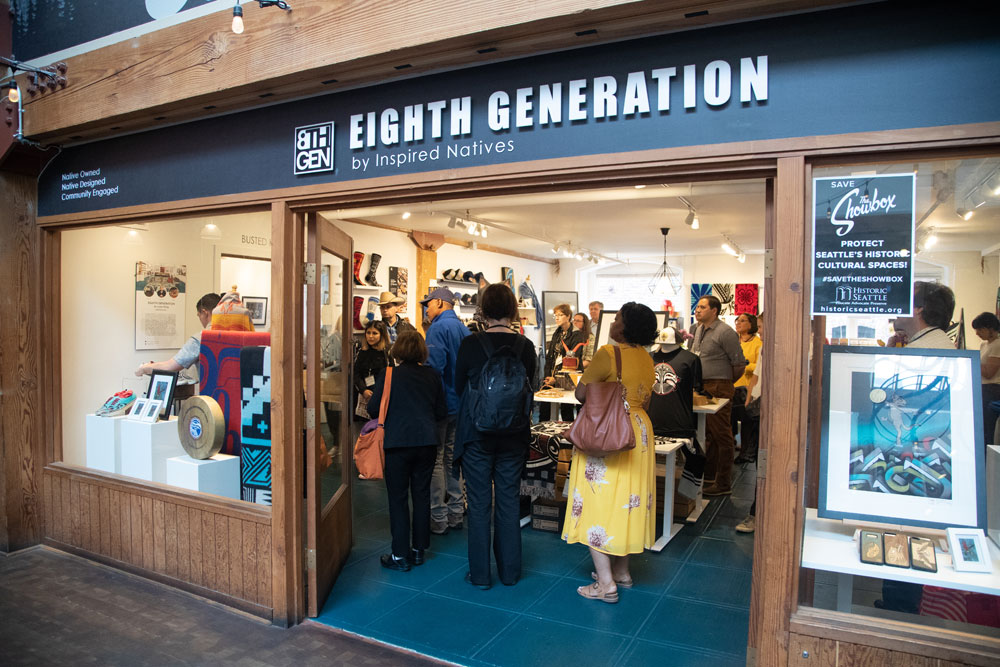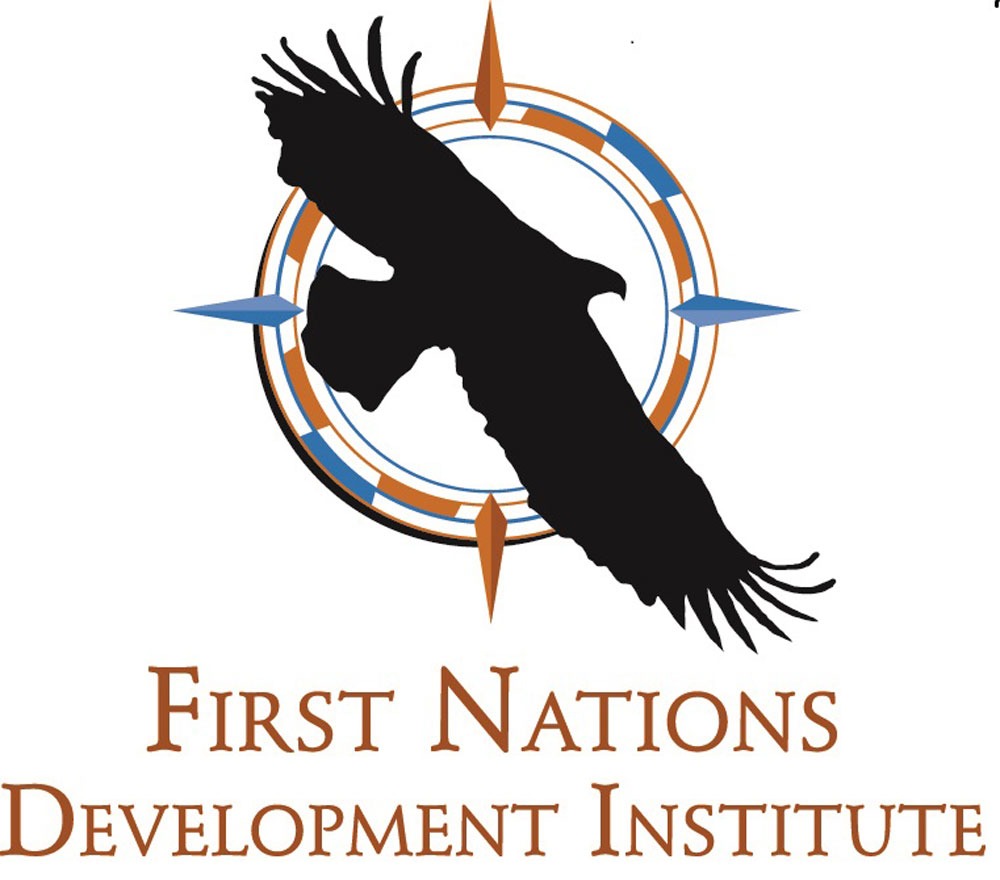
NPQ, in partnership with the First Nations Development Institute, has published a series of Native American activist writers who highlight the practices of community building in Indian Country this fall. This essay, also produced in partnership with the First Nations Development Institute, is the second of three articles that we are publishing from the perspective of philanthropy. (Additional related articles can be found at this FNDI webpage.)

How can a philanthropy be a good partner in Indian Country? A few key principles to keep in mind: 1) look for board and staff members with lived experience in the communities you wish to serve, 2) foster an environment where every voice is heard and respected, and 3) position yourself as a learner rather than an expert.
In spring 2019, I was struck by what Hadestown director Rachel Chavkin had to say about the lack of diversity on Broadway. In her Tony Award acceptance speech, Chavkin said, “I wish I wasn’t the only woman directing a musical on Broadway this season. There are so many women who are ready to go. There are so many artists of color who are ready to go. This is not a pipeline issue. It is a failure of imagination by a field whose job is to imagine the way the world could be. So, let’s do it.”
Wow, I thought. If she ever gives up on theater, she should come to work in philanthropy, where her words ring every bit as true as on Broadway.
Chavkin’s speech grabbed me because I’d been struggling to rise to a challenge from Nonprofit Quarterly and First Nations Development Institute (FNDI). They asked me to illuminate how and why the Northwest Area Foundation has established a track record of recruiting and retaining Native American members of our staff and board. Native representation in philanthropy at the program officer, CEO, or board member level is extremely slight. For example, relatively recent assessments by both First Nations Development Institute and the Council on Foundations puts the number of Native program officers or foundation executives at less than 40 nationwide.
The Northwest Area Foundation is different. Two of our five program officers are Native Americans, as are four of our 14 board members. We include and engage Native people at the heart of our operation; they influence how we deploy grant dollars and how we govern our institution. This is not at all new for us, and it’s not temporary. It is a firmly established aspect of our identity. So how did we get here, and why are we such an anomaly? Thank you, Rachel Chavkin, for so elegantly nailing the point I want to make: This is not a pipeline issue. It is a failure of imagination.
…
When the foundation hired me as its president and CEO in 2008, I was struck by the talent already assembled around the board table. Two of the most intriguing people on that board I inherited were nationally known champions of their under-resourced communities. Elouise Cobell was the named plaintiff in one of the largest class-action lawsuits ever brought against the US government, a case that was still pending in 2008. Elsie Meeks had been catalytic in sparking small business development in her community, where a locally owned, private-sector economy was virtually nonexistent when she started.
I remember thinking: What a gift that these two leaders are on our board. Who better to guide and inform our anti-poverty mission? How smart of this foundation to have engaged with them in this way.
And they were key players within the board: Elouise was on the executive committee and the CEO search committee; Elsie was about to become founding chair of the program committee. What made their presence a gift to me and my organization was their networks, their savvy, their conviction, their sense of humor, their good hearts, their sophistication about a board’s role—all the qualities that make for truly effective board members. What made them outliers in “mainstream” philanthropy is that both women were Native American.
Elouise and Elsie’s many contributions created an organizational context in which genuine board diversity and inclusion could thrive. Since then, the board and I have sought to build on that context. Today, four of our 14 board members are Native, and all are highly valued on the board. They bring a remarkable degree of diversity as well, representing different states, tribes, and professions. They have helped us conceive and execute a funding strategy in which Native Americans are at the center. Four of every 10 grant dollars the foundation awards go to Native-led organizations.
This positioning is compelling to us for many reasons.
Sign up for our free newsletters
Subscribe to NPQ's newsletters to have our top stories delivered directly to your inbox.
By signing up, you agree to our privacy policy and terms of use, and to receive messages from NPQ and our partners.
The eight-state region we serve is home to 75 federally recognized Native nations, and to several of the largest and most vibrant urban American Indian populations in the US. Our core issue is poverty: we support organizations anchored in the culture of the people they serve and dedicated to expanding economic opportunity in under-resourced communities, so these communities can thrive on their own terms instead of remaining locked in multi-generational disadvantage.
If you generated a poverty heat map of our region, the poorest places on that map would be reservation counties, and the poorest cohort within cities would be the Native community. In other words, you’d have to try really hard to miss the Native people in that picture. Yet organized philanthropy succeeds at this dubious accomplishment.
FNDI and Native Americans in Philanthropy have been documenting that fact for decades. The most recent research indicates that less than one third of one percent of organized philanthropy’s giving targets Native communities—and a significant portion of this giving actually goes to non-Native organizations. We embrace our position as an exception to that pattern.
Of course, we could have given grants to Native organizations without Native people present at the decision-making table. It would not have been the first time, or the last, that a foundation has done so. In my experience, foundation folks understand the meaning of the phrase “Nothing about us without us,” but we’re terribly inconsistent about applying it. Our commitment to robust representation of the Native community and other communities of color on our board is simply an attempt to live up to our values.
It is not the case that we found and retained these excellent board members through some extraordinary process. We simply built real relationships across our region, including in Indian Country, and went looking for the talent we wanted on our board. Our board’s norms and culture evolved in a positive way as these members gained influence and became leaders within the board. This is not a pipeline issue. Deeply experienced, resourceful, committed Native leaders are all around us, if we simply choose to look for them.
The same is true at the staff level. There was influential Native representation on our staff before I arrived—and committed and creative Native program officers have been part of our staffing mix throughout my tenure. Our Native program officers reminded me, as I was developing this article, that they were drawn to our staff because of the foundation’s engagement with Indian Country, and that we did targeted outreach to find Native program officers when we recruited them. These things matter a lot, and they have paid off for us. All of our Native staff members, in their own ways, have made us a more effective funder than we could have been without them.
…
I don’t believe this story contains any “lessons for the field” that the field doesn’t already know. But if you pushed me to come up with a bullet list anyway, here’s what I’d say:
- Look for board and staff members with lived experience in the communities you wish to serve. If you don’t have a sufficient web of relationships in those communities to source good board or staff candidates, that’s a problem. Own the problem and address it by building those relationships.
- Foster an environment where every voice is heard and respected. Do diverse members of your board and staff often express a sense of not being listened to? Do they at times withdraw into silence? Is their turnover rate higher than it is for board and staff members of majority communities? If so, those are signs that your organizational culture may be the problem. Own that problem and work on it. You’ll know you’re making progress and driving change when the diverse communities you’re trying to reach are giving positive feedback.
- As an organizational leader, position yourself as a learner rather than an expert. It’s no coincidence that my first two bulleted items require perceiving your organization’s weaknesses and committing to improvement. If there is a “secret sauce” in all of this, that’s it. Come to your work in a mindset of inquiry, recognizing that we are all flawed and incomplete leaders—works in progress. Think of learning, not mastery, as your most valuable core competency.
These concepts are relevant to engaging with Native American communities, but also any other communities you seek to engage. I would argue that these concepts are imperative if the historically elite field of philanthropy wishes to remain relevant in the decades ahead.
The time is long past due for Native people to be seen and valued by philanthropy, the nonprofit sector, and the broader society. The recent Reclaiming Native Truth project, for which I served on the advisory committee, offers a wealth of information about how Native people are misunderstood today by non-Natives, and offers a pathway toward changing the narrative. The research demonstrates that invisibility—the dominant culture’s inability or unwillingness to see that Native people exist—is a modern form of bias against Native Americans.
That point reminds me of my late friend Darrell Robes Kipp, an innovative educator from the Blackfeet Nation, who served on our board for several years. Darrell liked to say that when non-Natives asked him what they should call his people—Native Americans? American Indians? Indigenous? First Nations?—he would reply, “Call us the invisible Americans.”
Our foundation’s experiences have taught us that talented, capable Native staff and board members who can add great value to our work are all around us, a remarkable talent pool just waiting to be engaged. As Rachel Chavkin said, “This is not a pipeline issue. It is a failure of imagination. So, let’s do it.”
Kevin Walker is president and CEO of the Northwest Area Foundation, where he spearheads the foundation’s efforts to shape a future in which all people and communities in its region can thrive on their own terms and live free of poverty. Under his leadership, the foundation has sharpened its focus on asset-building in a set of priority communities: Native Americans, communities of color, immigrants, refugees, and people in rural areas. At the heart of this approach is NWAF’s commitment, honored every year since 2012, to target 40 percent of its giving to Native-led organizations. Other signature aspects of the foundation’s work during his tenure include an expanded commitment to mission investing and an organization-wide drive to advance diversity, equity and inclusion. Prior to joining the Northwest Area Foundation, Kevin spent 13 years with the Charles Stewart Mott Foundation in Flint, Michigan, including nine years as director of Mott’s national Pathways Out of Poverty program. His career in the nonprofit sector began in the early 1990s as associate director of Food Gatherers, a community-based, anti-hunger organization in Ann Arbor, Michigan. Kevin is a board member of Philanthropy Northwest, where he just completed three years as chair. He also serves on the boards of BoardSource, the national organization dedicated to excellence in nonprofit governance; and Akiptan, a Native community development financial institution affiliated with the Intertribal Agriculture Council.










